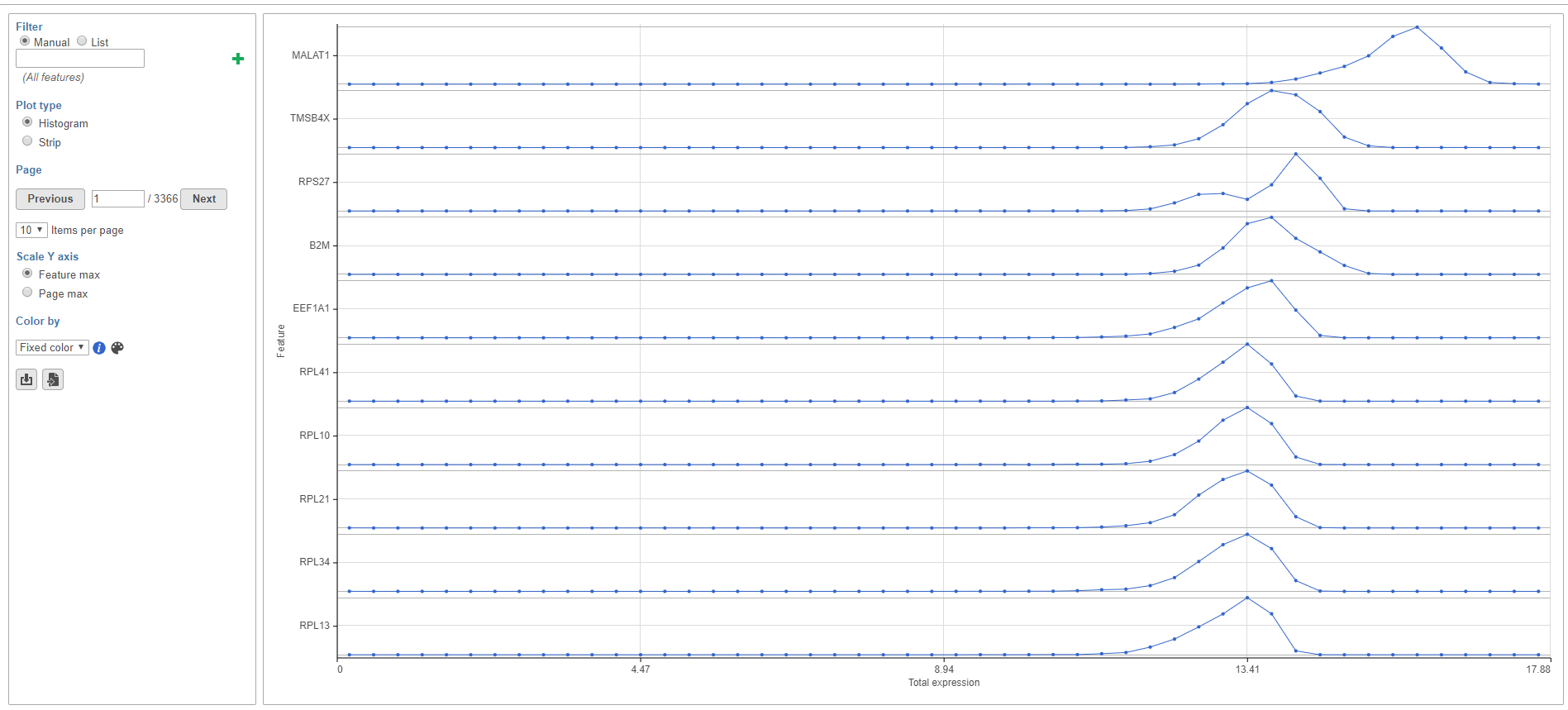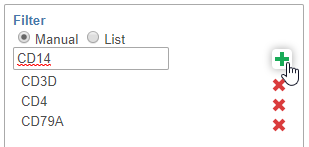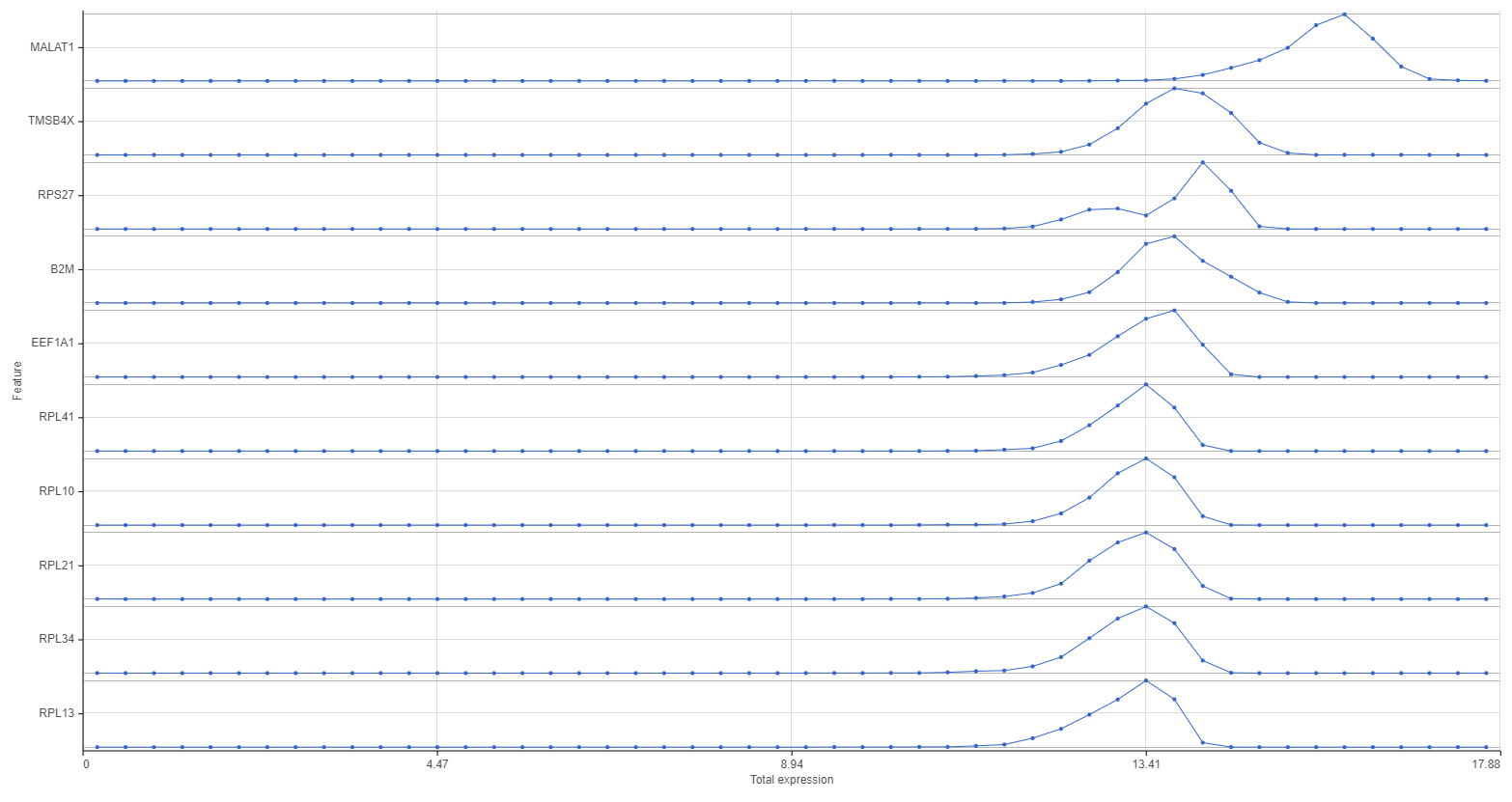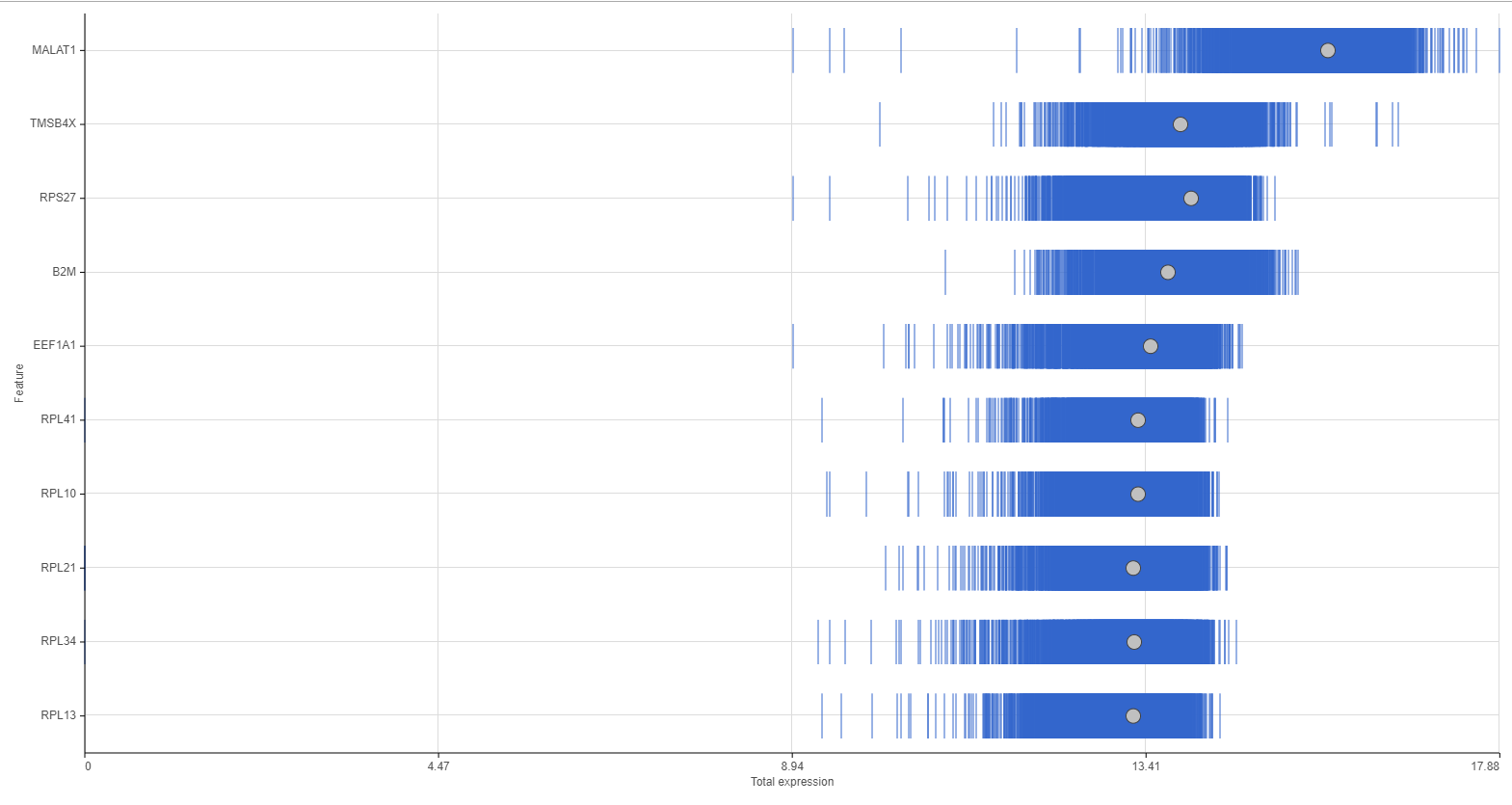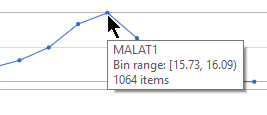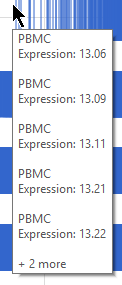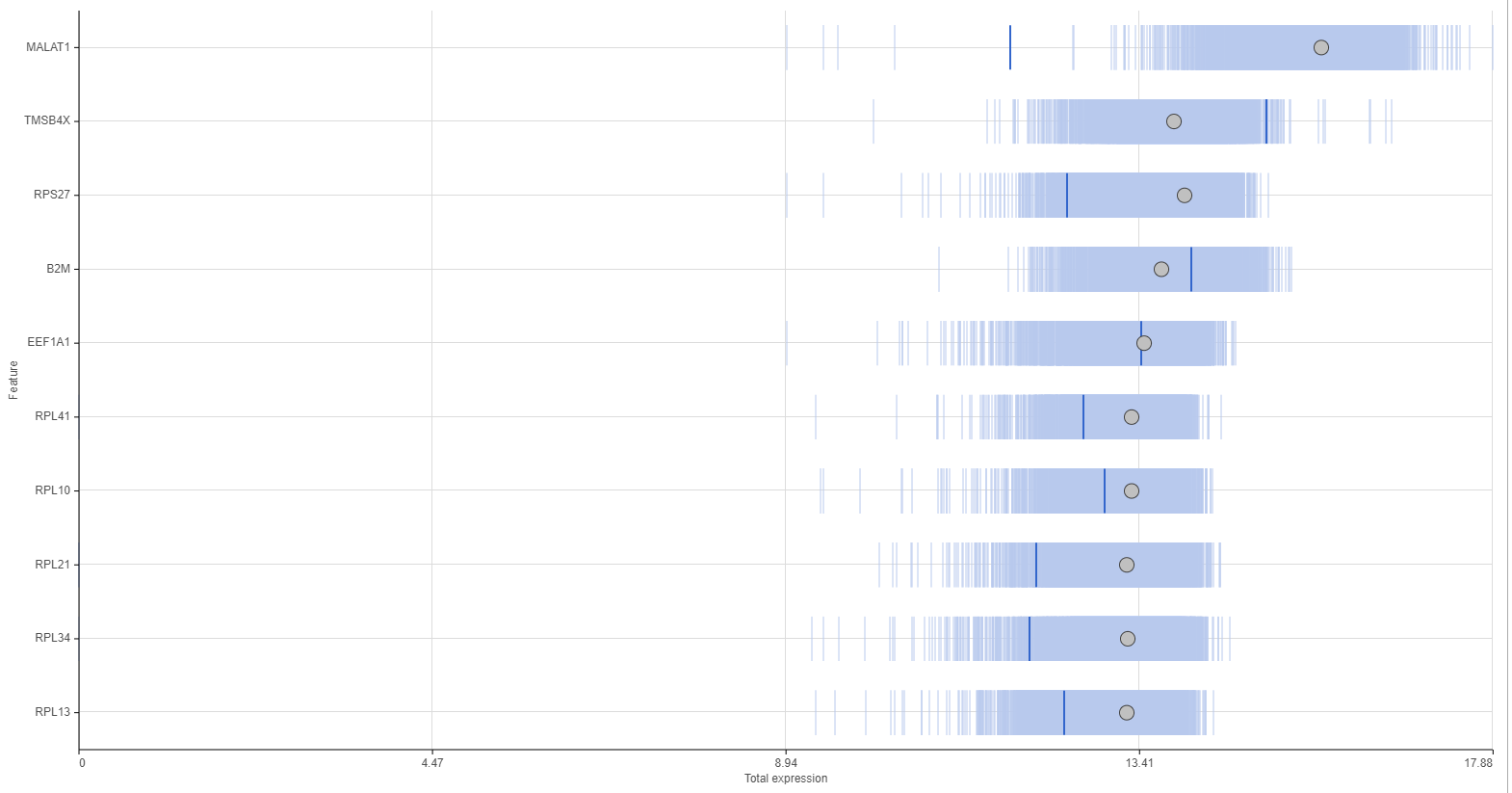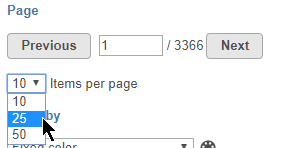Page History
| Table of Contents | ||||||
|---|---|---|---|---|---|---|
|
The Feature distribution plot visualizes the distribution of features in a counts data node.
Running Feature distribution
To run Feature distribution:
...
A new task node is generated with the Feature distribution report (Figure 1).
Feature distribution plot configuration
The Feature distribution task report plots the distribution of all features (genes or transcripts) in the input data node with one feature per row (Figure 21). Features are ordered by The plot by average value in descending order.
| Numbered figure captions | ||||
|---|---|---|---|---|
| ||||
The plot can be configured using the panel of the left-hand side of the page.
...
Using the filter, you can choose which features are shown in the task report.
The Manual filter lets you type a feature ID (such as a gene symbol) and filter to matching features by clicking . You can add multiple feature IDs to filter to multiple features (Figure 32).
| Numbered figure captions | ||||
|---|---|---|---|---|
| ||||
The List filter lets you filter to the features included in a feature list. To learn more about how to add feature lists in Partek Flow, please see List management.
...
Distributions can be plotted as histograms (Figure 4), with the x-axis being the expression value and the y-axis the frequency, or as a strip plot (Figure 5), where the x-axis is the expression value and the position of each cell/sample is shown as a thin vertical line, or strip, on the plot (Figure 3).
| Numbered figure captions | ||||
|---|---|---|---|---|
| ||||
To switch between plot types, use the Plot type radio buttons.
Page
The number of feature plots that appear on each page is set by the Items per page drop-down menu (Figure 6). You can choose to show 10, 25, or 50 feature per page.
Mousing over a dot in the histogram plot gives the range of feature values that are being binned to generate the dot and the number of cells/samples for that bin in a pop-up (Figure 4).
| Numbered figure captions | ||||
|---|---|---|---|---|
| ||||
Mousing over a strip shows the sample ID and feature value in a pop-up. If there are multiple cells/samples with the same value, only one strip will be visible for those cells/samples and the mouse-over will indicate how many cells/samples are represented by that one strip (Figure 5).
| Numbered figure captions | ||||
|---|---|---|---|---|
| ||||
Clicking a strip will highlight that cell/sample in all of the plots on the page (Figure 6).
| Numbered figure captions | ||||
|---|---|---|---|---|
| ||||
The grey dot in each strip plot shows the median value for that feature. To view the median value, mouse over the dot (Figure 6).
| Numbered figure captions | ||||
|---|---|---|---|---|
| ||||
Page
To navigate between pages, use the Previous and Next buttons or type the page number in the text field and click Enter on your keyboard.
The number of features that appear in the plot on each page is set by the Items per page drop-down menu (Figure 7). You can choose to show 10, 25, or 50 features per page.
| Numbered figure captions | ||||
|---|---|---|---|---|
| ||||
Scale Y-axis
When Plot type is set to Histogram, you can choose to configure the Y-axis scale using the Scale Y-axis radio buttons. Feature max sets each feature plot y-axis individually. Page max sets the same y-axis range for every feature plot on the page, with the range determined by the feature with the highest frequency value.
...
You can add attribute information to the plots using the Color by drop-down menu.
For histogram plots, the histograms will be split and colored by the levels of the selected attribute (Figure 78). You can choose any categorical attribute.
| Numbered figure captions | ||||
|---|---|---|---|---|
| ||||
For strip plots, the sample/cell strips will be colored by the the levels or values of the selected attribute (Figure 89). You can choose any categorical or numeric attribute.
...
| Additional assistance |
|---|
|
| Numbered figure captions | ||||
|---|---|---|---|---|
| ||||
| Rate Macro | ||
|---|---|---|
|
...
